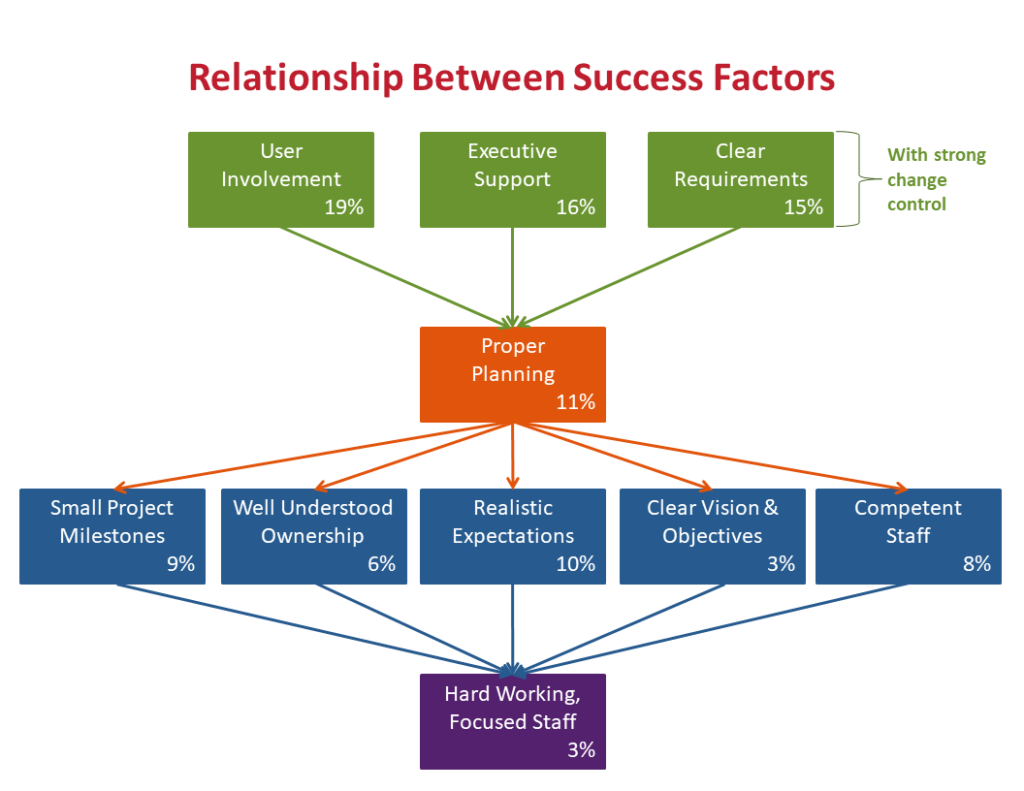As an IT professional, you have a big job, and a lot of it is project work. While projects can be incredibly diverse and always changing, their success is highly dependent on a surprisingly small number of key enablers. Since 1999, we at Coreio have reviewed our engagements (projects) for the presence of enablers for success based on an earlier study by the Standish Group (a review of 300 IT CIOs on 3,000 projects asking what is the most important enabler for project success).
Enabling Factors in Project Success
 Through our experience, we have found that three enablers—User Involvement (19%), Executive Support (16%), and Clear Requirements (15%)—are absolutely essential. Without them, the project will likely fail; with them, success is far more likely. It is not that other enablers don’t matter, but, as illustrated opposite, these three key enablers are prerequisite to the other enablers.
Through our experience, we have found that three enablers—User Involvement (19%), Executive Support (16%), and Clear Requirements (15%)—are absolutely essential. Without them, the project will likely fail; with them, success is far more likely. It is not that other enablers don’t matter, but, as illustrated opposite, these three key enablers are prerequisite to the other enablers.
The big question is: How do you as an I&O project manager ensure that the key enablers are in place before you start the project?
Executive Sponsorship is Key
It’s been our experience that projects that are very important to an organization tend to get more user and executive attention and support. In a perfect world you could “choose” to take on only these important projects, but in reality you often have no choice. Your best bet is to do your utmost to forge a strong and trusting relationship with the Executive Sponsor. One indicator of strong executive support is when they give you their home number and tell you to call them anytime you need help (but don’t hold your breath). If they are good sponsors, they will play a major role in helping engage users and obtaining requirements that are not in a constant state of flux. If you have these elements in place, the likelihood of success is good.
Here are a few suggestions that might strengthen your relationship with your Executive Sponsor:
- Recognize that no matter how important the project, your Sponsor has a day job and is always dealing with many conflicting priorities.
- Never present the Sponsor with a problem without a solution or action plan.
- Provide weekly status reports that are candid, outlining progress, issues and plans. If possible, make this communication between you and the sponsor only.
- Don’t assume that verbalizing a problem or opportunity will stick. Put it in writing.
- Wherever possible, make the Sponsor’s job easier and don’t burden them with trivia.
- Above all else, listen carefully to the Sponsor’s directives. After all, it is their career that is at stake.

Recent Comments